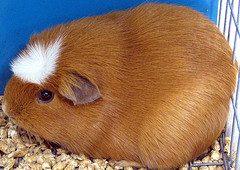

Most acute viral infections have a clear seasonal variation in incidence. In general, respiratory virus infections are more prevalent in winter months, while infections with enteric viruses predominate in the summer. In temperate climates, influenza mainly occurs from November to March in the northern hemisphere. There have been a number of suggestions to explain this seasonal incidence, but the most compelling is supported by recent data using a guinea pig model of influenza. In this study, spread of influenza virus in aerosols was shown to be dependent upon temperature and relative humidity.
To study transmission of influenza, the authors housed infected and uninfected guinea pigs in an environmental chamber. They found that transmission of infection was most efficient when the humidity was 20-35%; it was blocked at 80% humidity. Furthermore, transmission was more likely to occur at 5°C than at 20°C. The authors concluded that conditions found during winter, low temperature and humidity, favor spread of the infection.
Why is influenza transmission dependent on low humidity? One factor is the stability of the virion: it has been shown that viral stability is maximal at low humidity (20%€“40%), minimal at intermediate humidity (50%), and high at elevated humidity (60%€“80%). Another factor is the respiratory droplet in which influenza viruses are transmitted. At low humidity, exhaled aerosols would rapidly lose water, leading to the formation of droplet nuclei. These particles are less than 5 μm in diameter and remain airborne for long periods, facilitating virus transmission. At high humidity, respiratory droplets absorb water, becoming larger and falling to the ground more rapidly than droplet nuclei. The authors propose “that at high RH (80%) exhaled respiratory droplets settle too rapidly to contribute to influenza virus spread.”
Curiously, influenza aerosol transmission was blocked at 30°C. This observation is at odds with the fact that influenza occurs all year round in tropical climates. The authors show in a subsequent paper that contact transmission still occurs at this high temperature. Therefore it is possible that contact or very short-range spread is the predominant mode of influenza transmission in the tropics.
You could try keeping your home warm and moist in the winter to minimize influenza transmission. However, sooner or later you will encounter a cool, dry environment and all your precautions will be tossed to the wind.
High temperature (30 degrees C) blocks aerosol but not contact transmission of influenza virus. Lowen AC, Steel J, Mubareka S, Palese P. J Virol. 2008 Jun;82(11):5650-2.

You can now use your Facebook account to post comments on virology.ws.
You can now use your Facebook account to post comments on virology.ws.
Pingback: Pets Pets Pets » Blog Archive » Cool Guinea Pig Supplies images
Pingback: How To Groom Guinea Pigs | Travel Directions Review
Looks like you’ve done your research very well.
Pingback: 2006 TN State Fair: Crested Guinea Pig | Pinjarest
Pingback: Influenza H5N1 x H1N1 reassortants: ignore the headlines, it’s good science